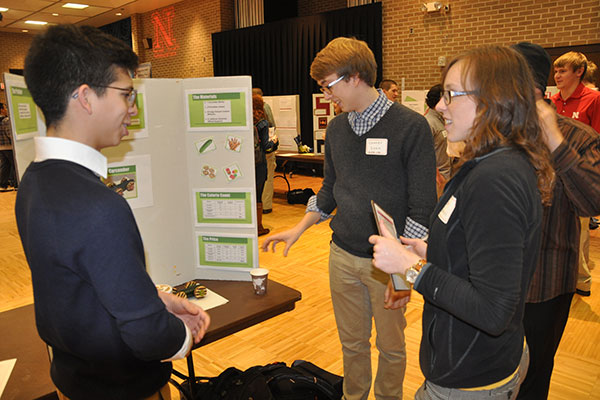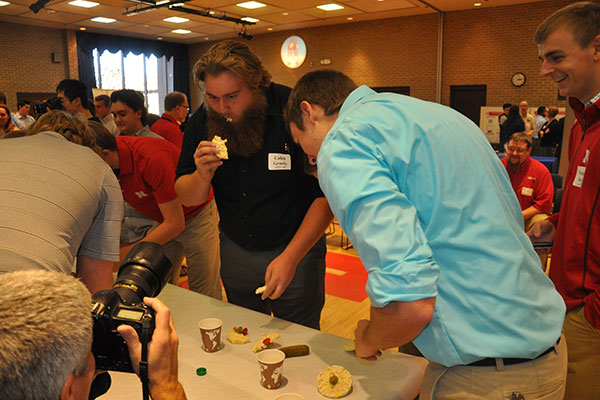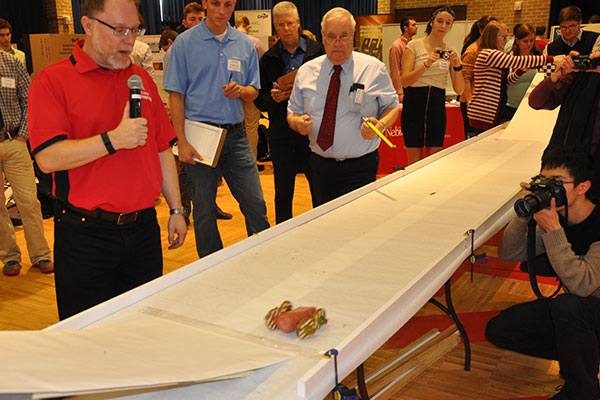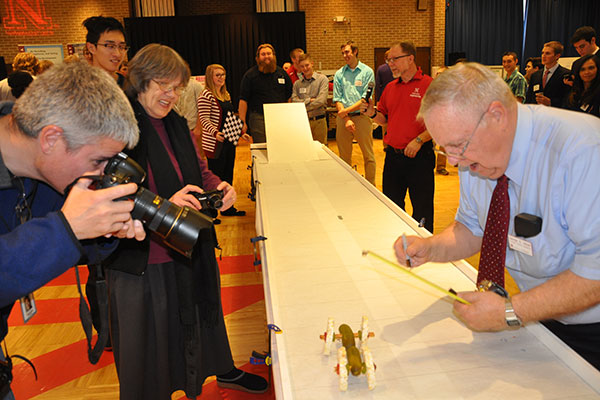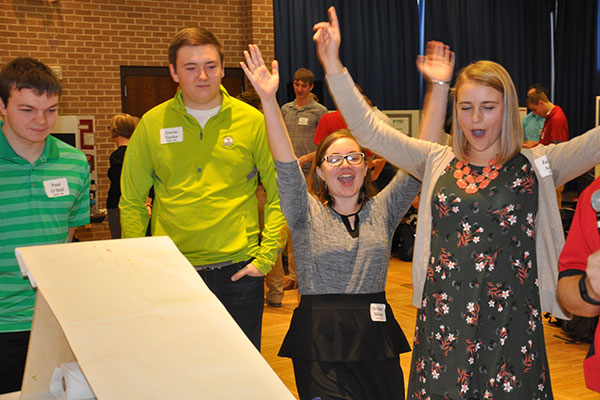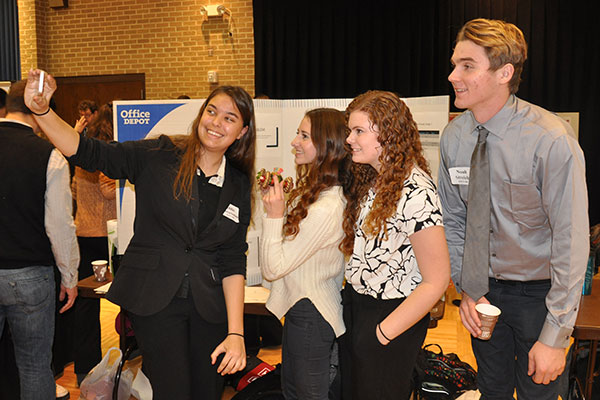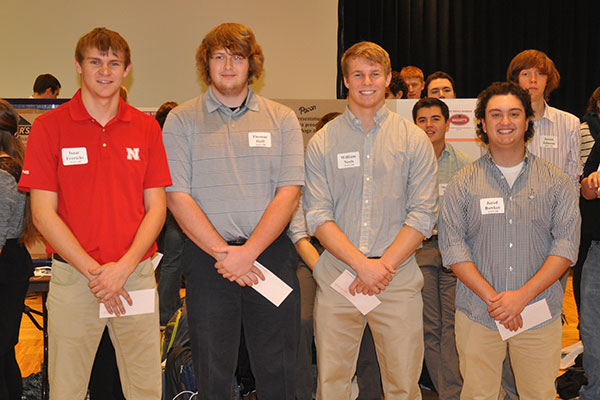Calendar Icon
Dec 08, 2015
Person Bust Icon
By Karl Vogel
![]() RSS
Submit a Story
RSS
Submit a Story
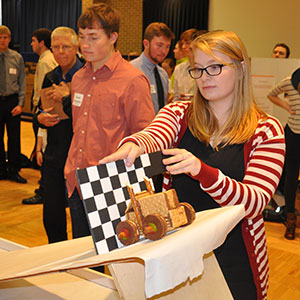
Although their car didn't go the farthest or get the most miles to the calorie, Team Salami Tsunami walked away with the top prize Tuesday at the annual Incredible, Edible Vechicle Competition at the East Campus Union.
In the annual competition for students in an introductory biological systems and agricultural engineering course, 17 teams of students designed cars made entirely of food products and competed against each other.
Teams rolled cars down a sloped track to see which one travels farthest and stays in one piece. They must make a poster detailing the process of designing and making their cars, which are limited to a calorie maximum of 1,500. After their two runs down the track, three team members must devour their creation.
The team of Nathan Boyle, Caleb Gruefe, Jacob Kreikemeier and Tobin Widhalm blew away the competition in calories used -- less than 200 for a vehicle that consisted of two dill pickles, four rice cake wheels, two pretzel rod axels and gummy candies to hold everything together. Its two runs totaled more than 190 inches, which was more than double the runner-up from Salami Tsunami.
But what won the day for the team of Jared Bowker, Isaac Frerichs, Thomas Huff and Will Neels was consistent high placement in each of the categories despite having a high-caloric count of 1,127 from a design of a salami log, fudge-striped cookies, pretzel rods, gummy candies and black licorice.
"I honestly didn't expect to end up in first place," said Neels of his team's car, which he said was build to look more like a tractor. "I figured that the distance would have been more of a prioritized category. I guess we had the right combination of things, both in our presentation and our car.
"We wanted to get a nice design that would roll straight. That was number one – making it functional. But we also were thinking that we had to have something that we could chow down fast, and salami's the first thing we thought of."
Mark Riley, department head for Biological Systems Engineering, said the demands for consistency across the four categories are meant to replicate demands placed on engineers in real-world projects and said the calorie limit was instituted this year to make for a healthier competition.
Now that the competition is over, Team Salami Tsunami will likely take a needed break.
"I think we're all kind of burned out on salami," Neels said.
In the annual competition for students in an introductory biological systems and agricultural engineering course, 17 teams of students designed cars made entirely of food products and competed against each other.
Teams rolled cars down a sloped track to see which one travels farthest and stays in one piece. They must make a poster detailing the process of designing and making their cars, which are limited to a calorie maximum of 1,500. After their two runs down the track, three team members must devour their creation.
The team of Nathan Boyle, Caleb Gruefe, Jacob Kreikemeier and Tobin Widhalm blew away the competition in calories used -- less than 200 for a vehicle that consisted of two dill pickles, four rice cake wheels, two pretzel rod axels and gummy candies to hold everything together. Its two runs totaled more than 190 inches, which was more than double the runner-up from Salami Tsunami.
But what won the day for the team of Jared Bowker, Isaac Frerichs, Thomas Huff and Will Neels was consistent high placement in each of the categories despite having a high-caloric count of 1,127 from a design of a salami log, fudge-striped cookies, pretzel rods, gummy candies and black licorice.
"I honestly didn't expect to end up in first place," said Neels of his team's car, which he said was build to look more like a tractor. "I figured that the distance would have been more of a prioritized category. I guess we had the right combination of things, both in our presentation and our car.
"We wanted to get a nice design that would roll straight. That was number one – making it functional. But we also were thinking that we had to have something that we could chow down fast, and salami's the first thing we thought of."
Mark Riley, department head for Biological Systems Engineering, said the demands for consistency across the four categories are meant to replicate demands placed on engineers in real-world projects and said the calorie limit was instituted this year to make for a healthier competition.
Now that the competition is over, Team Salami Tsunami will likely take a needed break.
"I think we're all kind of burned out on salami," Neels said.
Submit a Story
